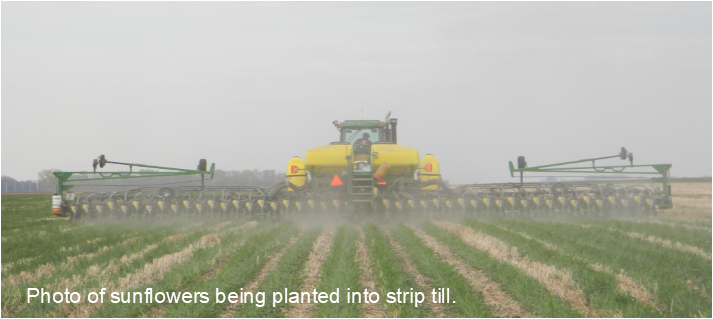Fertility: Soil testing could reduce your input costs
“Sunflowers may not require as much nitrogen as other crops,” says Alison Pokrzywinski, Nuseed technical agronomist, “and over-fertilization may do more harm than good.” It’s also important to remember fertilizer can’t be placed in-furrow, but there are still options to place it in the soil, she says.
Some sunflower growers have cut back on inputs by soil testing and following their agronomist’s prescriptive recommendations. By applying what each field’s soil specifically needs they can minimize inputs and often reduce nitrogen, while adding other micronutrients like zinc and potash for healthier plants and higher yields.
“After planting wheat or corn, producers may think sunflowers don’t need a lot of nitrogen. They don’t, necessarily. In fact, you can have a negative response by applying too much nitrogen – your yield can decrease and your plants get very tall and lanky, and can lodge more. Assess what your soil has available against what your crop needs and apply accordingly.”
Sunflower growers can analyze their fertilizer needs with NDSU’s Sunflower Nitrogen Calculator.

For more sunflower fertilizing recommendations refer to NDSU Extension Service’s Fertilizing Sunflower publication and Kansas State University’s High Plains Sunflower Production Handbook.


Seedbed prep: Conventional-till or no-till
Proper seedbed preparation is required prior to seeding sunflowers. Whether it’s conventional-till or no-till, an even seedbed promotes uniform germination and emergence, and a good plant stand establishment.
In a no-till situation, Alison Pokrzywinski, Nuseed technical agronomist, recommends maintaining clean fields with good chemical control to get plants off to a strong start. She suggests applying a pre-plant or pre-emergence herbicide in addition to hybrids with Dupont’s ExpressSun® or BASF’s Clearfield® production systems with in-crop weed control. Nuseed introduced three new high oleic hybrids this season, each with a different herbicide trait.
“The majority of growers are putting some sort of ‘pre-‘ down, most of them being Spartan®, or something from the Spartan family,” she says. Spartan, available in the United States, is a Group 14 pre-plant or pre-emergence herbicide with sulfentrazone as the active ingredient.
A group 15 herbicide with the active ingredient pyroxasulfone, recently received a supplemental sunflower label in the United States. “It’s another tool in the toolbox,” she says. “Having options helps break up glyphosate use.”
Always follow registered product labels carefully.
From planting through to storage, this checklist will keep you on track to reach your yield and profit goals.

